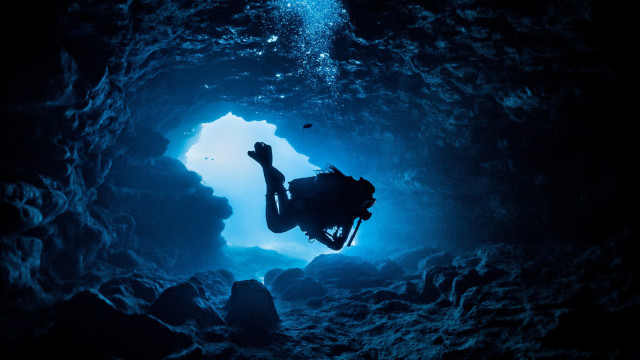
























© Wikimedia/Creative Commons
0 / 25 Fotos
Who were the Slavic vampires? - Slavic vampire beliefs have reportedly been around since the 4th century AD. These creatures were essentially ghosts of dead people. Though they could also turn into living dead creatures (i.e. zombies).
© Shutterstock
1 / 25 Fotos
Dracula, Nosferatu, and other blood-sucking monsters - Vampires were portrayed very differently in Western culture. These were more akin to personified bats than the vampires in Slavic folklore.
© Getty Images
2 / 25 Fotos
Who did they attack?
- Slavic vampires would supposedly attack their own family and household animals. (Photo: Wikimedia / CC BY-SA 4.0)
© Wikimedia/Creative Commons
3 / 25 Fotos
How did they do it? - According to folklore, they would drink their blood, eat their flesh, or stifle them.
© Getty Images
4 / 25 Fotos
How did a person become a vampire? - Legend has it that a future vampire was born with two souls. This could be "cured" through baptism with holy water.
© iStock
5 / 25 Fotos
Another possibility - Another version is that any person born with two hearts, additional teeth, or with a unibrow, was potentially a vampire.
© iStock
6 / 25 Fotos
Yet another version - But there's more. The Slavs also believed that people who died a sudden, unexpected death would become vampires. This was particularly true for those who committed suicide.
© iStock
7 / 25 Fotos
The root of evil - Slavic people essentially believed that an evil person would always remain evil, even after death.
© Shutterstock
8 / 25 Fotos
Vampire hunters - Iron nails, iron rods, and wooden pegs were commonly used to kill suspected vampires.
© iStock
9 / 25 Fotos
How to bury a vampire - According to Slavic folklore, there's a whole ritual to make sure that a vampire doesn't come back from the dead.
© Shutterstock
10 / 25 Fotos
Facing flowers - The corpse was buried with its face down and poppy seeds were placed in the coffin.
© Shutterstock
11 / 25 Fotos
Killing the dead - A sharp tool like a sickle or a scythe was placed over the neck to prevent the vampire from rising without being decapitated.
© iStock
12 / 25 Fotos
Pain in death - A pebble or coin was placed under the corpse's tongue and its hands were tied behind the back. Feet were mutilated and the sinews in the legs were cut to prevent it from rising.
© Shutterstock
13 / 25 Fotos
Out of reach - They were also sometimes decapitated, and their heads would be placed between their legs so that they wouldn't be able to reach it.
© Shutterstock
14 / 25 Fotos
Spikes and rocks - Spikes were put in the tongue, most likely to prevent the vampire from sucking blood. The body would be buried deep and then covered with rocks.
© Reuters
15 / 25 Fotos
Anti-vampire graves - In 2013, a number of anti-vampire graves were discovered in a construction site near Gliwice in Poland.
© Shutterstock
16 / 25 Fotos
Anti-vampire graves - In 2012, Bulgarian archaeologists found two skeletons with iron rods piercing their chests.
© Reuters
17 / 25 Fotos
Anti-vampire graves
- Fourteen anti-vampire graves were also discovered in a medieval cemetery in Kałdus, Poland.
© iStock
18 / 25 Fotos
Anti-vampire graves - Skeletons were also unearthed in Drawsko Pomorskie, Poland.
© Getty Images
19 / 25 Fotos
Drawsko study - A 2014 study by American researchers suggested the people buried in Drawsko died of cholera.
© Shutterstock
20 / 25 Fotos
Drawsko vampires - It's suggested that there was a belief that these people could come back from the dead as vampires and bring the deadly diseases with them.
© Shutterstock
21 / 25 Fotos
The Hassal Grave
- Legend has it that this grave at Malew Churchyard on the Isle of Man belongs to a vampire. (Photo: Wikimedia / CC BY-SA 2.0)
© Wikimedia/Creative Commons
22 / 25 Fotos
Italian vampire
- A skull of a woman was found in Lazzaretto Nuovo, Italy with her jaw forced open by a brick.
© Flickr/Creative Commons
23 / 25 Fotos
Pre-historic vampire beliefs - Polish ethnologist Kazimierz Moszyński puts forward the hypothesis that vampirism dates back to pre-historic times. He argues that some of the perforated skulls found by pre-historians could have actually been pierced through with wooden pegs, which would have then subsequently rotted.
© iStock
24 / 25 Fotos
© Wikimedia/Creative Commons
0 / 25 Fotos
Who were the Slavic vampires? - Slavic vampire beliefs have reportedly been around since the 4th century AD. These creatures were essentially ghosts of dead people. Though they could also turn into living dead creatures (i.e. zombies).
© Shutterstock
1 / 25 Fotos
Dracula, Nosferatu, and other blood-sucking monsters - Vampires were portrayed very differently in Western culture. These were more akin to personified bats than the vampires in Slavic folklore.
© Getty Images
2 / 25 Fotos
Who did they attack?
- Slavic vampires would supposedly attack their own family and household animals. (Photo: Wikimedia / CC BY-SA 4.0)
© Wikimedia/Creative Commons
3 / 25 Fotos
How did they do it? - According to folklore, they would drink their blood, eat their flesh, or stifle them.
© Getty Images
4 / 25 Fotos
How did a person become a vampire? - Legend has it that a future vampire was born with two souls. This could be "cured" through baptism with holy water.
© iStock
5 / 25 Fotos
Another possibility - Another version is that any person born with two hearts, additional teeth, or with a unibrow, was potentially a vampire.
© iStock
6 / 25 Fotos
Yet another version - But there's more. The Slavs also believed that people who died a sudden, unexpected death would become vampires. This was particularly true for those who committed suicide.
© iStock
7 / 25 Fotos
The root of evil - Slavic people essentially believed that an evil person would always remain evil, even after death.
© Shutterstock
8 / 25 Fotos
Vampire hunters - Iron nails, iron rods, and wooden pegs were commonly used to kill suspected vampires.
© iStock
9 / 25 Fotos
How to bury a vampire - According to Slavic folklore, there's a whole ritual to make sure that a vampire doesn't come back from the dead.
© Shutterstock
10 / 25 Fotos
Facing flowers - The corpse was buried with its face down and poppy seeds were placed in the coffin.
© Shutterstock
11 / 25 Fotos
Killing the dead - A sharp tool like a sickle or a scythe was placed over the neck to prevent the vampire from rising without being decapitated.
© iStock
12 / 25 Fotos
Pain in death - A pebble or coin was placed under the corpse's tongue and its hands were tied behind the back. Feet were mutilated and the sinews in the legs were cut to prevent it from rising.
© Shutterstock
13 / 25 Fotos
Out of reach - They were also sometimes decapitated, and their heads would be placed between their legs so that they wouldn't be able to reach it.
© Shutterstock
14 / 25 Fotos
Spikes and rocks - Spikes were put in the tongue, most likely to prevent the vampire from sucking blood. The body would be buried deep and then covered with rocks.
© Reuters
15 / 25 Fotos
Anti-vampire graves - In 2013, a number of anti-vampire graves were discovered in a construction site near Gliwice in Poland.
© Shutterstock
16 / 25 Fotos
Anti-vampire graves - In 2012, Bulgarian archaeologists found two skeletons with iron rods piercing their chests.
© Reuters
17 / 25 Fotos
Anti-vampire graves
- Fourteen anti-vampire graves were also discovered in a medieval cemetery in Kałdus, Poland.
© iStock
18 / 25 Fotos
Anti-vampire graves - Skeletons were also unearthed in Drawsko Pomorskie, Poland.
© Getty Images
19 / 25 Fotos
Drawsko study - A 2014 study by American researchers suggested the people buried in Drawsko died of cholera.
© Shutterstock
20 / 25 Fotos
Drawsko vampires - It's suggested that there was a belief that these people could come back from the dead as vampires and bring the deadly diseases with them.
© Shutterstock
21 / 25 Fotos
The Hassal Grave
- Legend has it that this grave at Malew Churchyard on the Isle of Man belongs to a vampire. (Photo: Wikimedia / CC BY-SA 2.0)
© Wikimedia/Creative Commons
22 / 25 Fotos
Italian vampire
- A skull of a woman was found in Lazzaretto Nuovo, Italy with her jaw forced open by a brick.
© Flickr/Creative Commons
23 / 25 Fotos
Pre-historic vampire beliefs - Polish ethnologist Kazimierz Moszyński puts forward the hypothesis that vampirism dates back to pre-historic times. He argues that some of the perforated skulls found by pre-historians could have actually been pierced through with wooden pegs, which would have then subsequently rotted.
© iStock
24 / 25 Fotos
The bloody truth about anti-vampire burials
Discover the dark history behind vampire graves
© Wikimedia/Creative Commons
Between 2008 and 2013, Polish archaeologists made a chilling discovery: a number of "anti-vampire" graves. This however, was not the first vampire burial site unearthed. But who were these people and why were they buried in such a disturbing way? Click through the gallery to find out more.
(Photo: Wikimedia / CC BY-SA 4.0)
RECOMMENDED FOR YOU




































MOST READ
- Last Hour
- Last Day
- Last Week
-
1
CELEBRITY Relationships
-
2
LIFESTYLE Throwback
-
3
LIFESTYLE Catholicism
-
4
LIFESTYLE Home remedies
-
5
LIFESTYLE Putin
-
6
FOOD Fine dining
-
7
LIFESTYLE Emotions
-
8
TRAVEL Nations
-
9
LIFESTYLE History
-
10
LIFESTYLE Emergency








